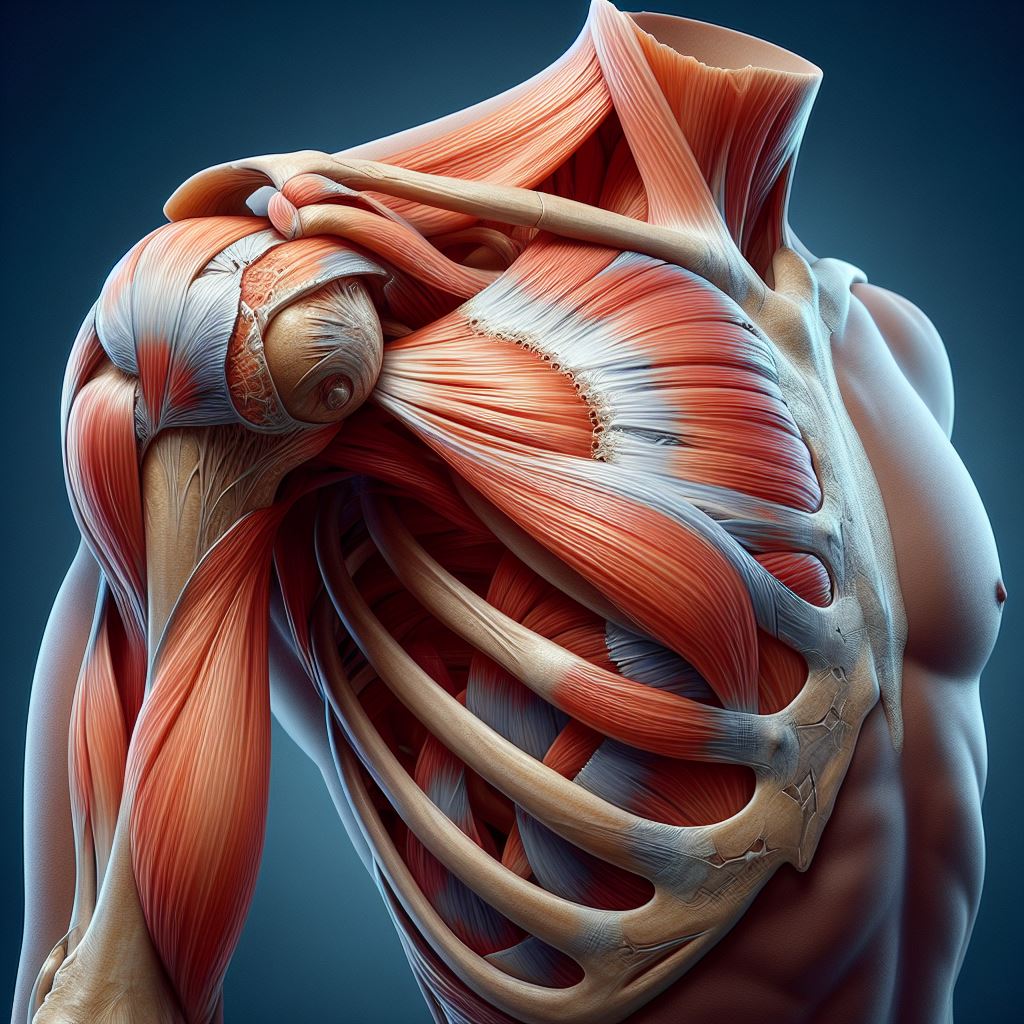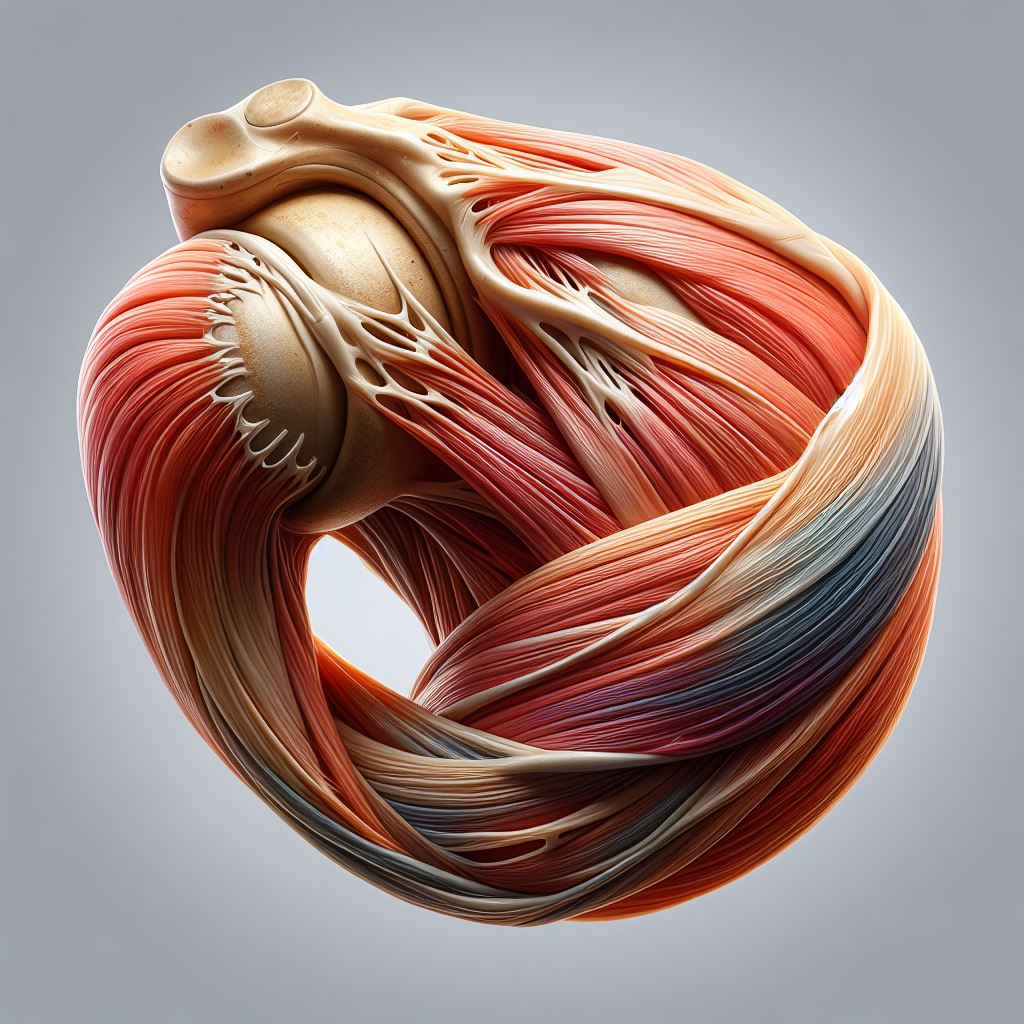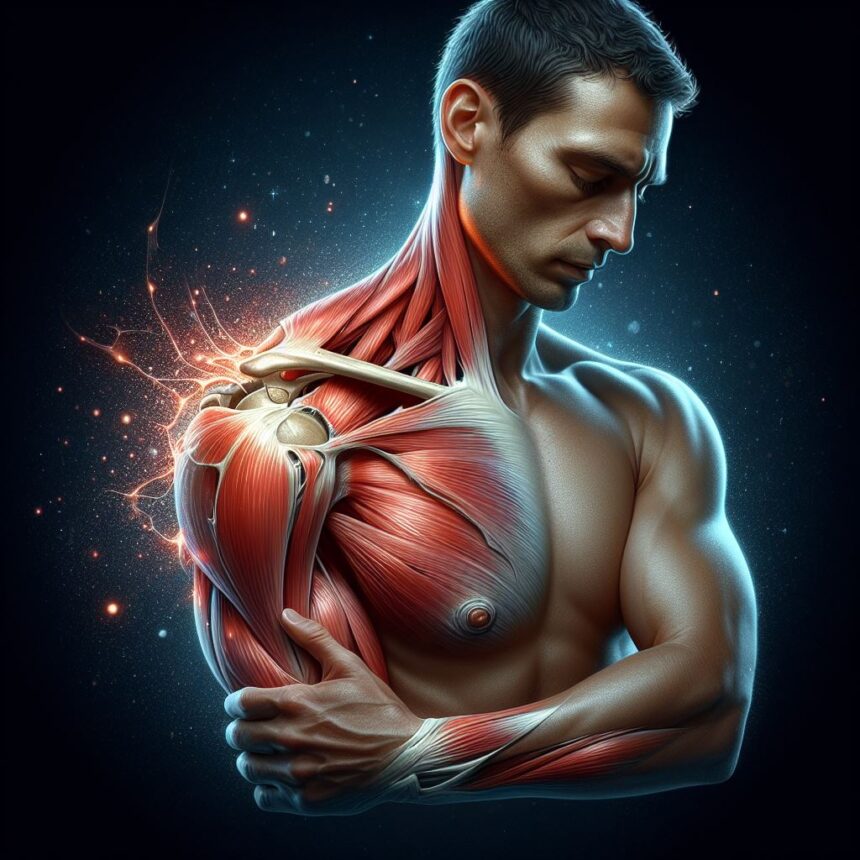A torn rotator cuff can be a painful and debilitating injury, affecting everything from daily activities to a good night’s sleep. Common among athletes, the elderly, and those involved in repetitive overhead motions, this injury involves tears in the muscles and tendons surrounding the shoulder joint. Fortunately, there are effective natural remedies that can aid in the healing process, allowing for recovery without the need for surgery or heavy medications. In this blog, we will explore various natural approaches to rehabilitate a torn rotator cuff, emphasizing gentle, body-friendly methods.
Understanding a Torn Rotator Cuff

A torn rotator cuff involves damage to one or more of the four muscles and their tendons in the shoulder joint. These muscles are crucial in facilitating shoulder movements and maintaining joint stability. Injury to this area typically results in pain and restricted movement, often impacting daily activities.
Causes of a Rotator Cuff Injury
Rotator cuff injuries can occur from various factors. Common causes include:
– Repetitive Strain: Repetitive overhead motions frequently seen in sports like baseball or jobs such as painting can strain rotator cuffs over time.
– Acute Injury: A sudden fall or impact that forces the shoulder into an awkward position can tear the rotator cuff.
– Degenerative Tear: Age-related wear and tear can weaken the tendons, making them more prone to tears.
– Poor Blood Supply: As we age, the blood supply to the rotator cuff tendons decreases, hindering the body’s natural ability to repair minor tears.
Symptoms of a Torn Rotator Cuff
Identifying the symptoms of a torn rotator cuff early can prevent the injury from worsening. Common symptoms include:
– Pain and Swelling: Often felt in the front of the shoulder and side of the arm. The pain may worsen with activities that involve lifting or reaching.
– Reduced Mobility: Difficulty in raising the arm or performing activities behind the back like buttoning or zipping.
– Weakness: Experiencing a lack of strength in the shoulder, making everyday tasks challenging.
– Audible Clicking or Popping Sensations: These can occur during shoulder movement if the tear is severe.
Traditional Treatments for a Torn Rotator Cuff
While natural remedies can be effective, understanding traditional approaches can provide a comprehensive treatment outlook. Here’s how conventional methods tackle a torn rotator cuff.
Medical Interventions
The initial treatment for a torn rotator cuff often involves non-surgical methods which include:
– Rest: Avoiding movements that aggravate the shoulder can help in reducing inflammation.
– Cold Compresses: Applying ice packs can decrease swelling and numb the pain.
– Nonsteroidal Anti-Inflammatory Drugs (NSAIDs): Medications such as ibuprofen or aspirin are often recommended to manage pain and reduce swelling.
– Corticosteroid Injections: Injecting steroids directly into the shoulder can provide temporary relief from pain and inflammation.
Physical Therapy
Physical therapy is a cornerstone of treating a torn rotator cuff. It includes:
– Strengthening Exercises: Strengthening the muscles around the shoulder joint can help to compensate for the torn muscle.
– Flexibility Exercises: Stretching exercises are utilized to improve the range of motion and reduce stiffness.
– Manual Therapy: Techniques such as massage and manipulation to relieve tension and pain.
Surgery Options
For more severe cases, surgery might be necessary to restore shoulder function. Options include:
– Arthroscopic Repair: A minimally invasive surgery where small incisions are made to repair the rotator cuff.
– Open Tendon Repair: In more significant or complex tears, a traditional open surgical approach might be adopted.
– Tendon Transfer: If the torn tendon is too damaged, a nearby healthy tendon may be moved to replace the damaged one.
Understanding both natural and traditional treatment options provides a well-rounded approach to managing and potentially healing a torn rotator cuff. Strategies from both realms can often be combined to tailor individual recovery plans.
Natural Remedies for Healing a Torn Rotator Cuff
Rest and Ice Therapy
When dealing with a torn rotator cuff, the initial steps towards natural healing involve adequate rest and ice therapy. Rest is crucial to prevent further aggravation of the injury and to give the tissues time to begin the recovery process. It’s important to avoid activities that strain the shoulder, as these can interfere with healing. While resting, applying ice packs to the affected area can help reduce swelling and soothe pain. Use an ice pack wrapped in a towel for about 15-20 minutes every few hours. This combination of rest and cold therapy helps in reducing inflammation, which is a key part of the body’s natural healing process.
Exercise and Stretching
Once the initial pain and swelling have decreased, introducing gentle exercises and stretches can aid in the healing of a torn rotator cuff. It is vital to begin with exercises that do not cause pain. Gentle stretches that improve flexibility and range of motion can be particularly beneficial. For example, pendulum exercises, where you lean over slightly and allow the affected arm to hang and swing in small circles, can promote mobility without excessive strain. As strength begins to return, resistance exercises using bands can be added carefully. Always consult with a physical therapist to ensure that the exercises are appropriate for your specific condition.
Diet and Nutrition
Diet plays a critical role in repairing a torn rotator cuff naturally. Consuming foods high in anti-inflammatory properties helps in reducing swelling and pain. Foods rich in omega-3 fatty acids, such as fish like salmon and mackerel, chia seeds, and flaxseeds, are excellent choices. Increasing the intake of fruits and vegetables that are high in antioxidants, like berries, spinach, and broccoli, supports tissue recovery. Also, incorporating sufficient protein in your diet from sources like chicken, tofu, and legumes, aids in the repair of muscle and other connective tissues. Hydration is equally important, so ensure you drink plenty of water throughout the day.
Lifestyle Changes to Support Healing
Proper Posture and Ergonomics
Adopting proper posture and ergonomic practices is essential when recovering from a rotator cuff injury. Poor posture can increase the strain on your rotator cuff muscles and impede recovery. When sitting, keep your shoulders relaxed and in a neutral position, and make sure your back is supported. If you work at a desk, ensure that your workstation is set up to encourage good posture. Your computer screen should be at eye level, and your arms should rest comfortably on the desk or armrests without slouching or elevating the shoulders.
Stress Management Techniques
Managing stress is a crucial aspect of healing because stress can actually exacerbate inflammation and pain. Techniques such as deep breathing, meditation, or yoga can be quite beneficial in managing stress levels. Implementing regular periods of relaxation and mindfulness into your daily schedule not only helps relieve stress but also promotes overall well-being, which is important for recovery.
Sleep and Recovery Importance
Quality sleep is vital for the healing process of a torn rotator cuff. During sleep, your body goes into repair mode, regenerating tissues and releasing hormones that aid healing. Aim for 7-9 hours of good-quality sleep per night. Establish a relaxing bedtime routine and create a comfortable, sleep-conducive environment by minimizing noise and light. Additionally, try to keep a consistent sleep schedule even on weekends to maintain a natural rhythm, supporting faster recovery.
Preventing Future Injuries

Maintaining the health of your rotator cuff is crucial not just for recovery, but also for preventing future injuries. Implementing effective strategies for warm-up and cool-down routines, engaging in appropriate strength training, and keeping up with regular check-ups can make all the difference. Here’s how you can integrate these practices into your daily routine to safeguard your shoulders.
Warm-up and Cool-down Strategies
Before embarking on any physical activity, particularly those involving the upper body, it’s important to prepare your muscles. A proper warm-up increases blood flow and flexibility, which can reduce the risk of injuries. Start with gentle stretching of the neck, shoulders, and arms. Follow this up with dynamic exercises like arm circles, battle ropes and shoulder shrugs that mimic the movements you’ll be performing. This preparation phase should last about 5-10 minutes.
Cooling down is just as crucial. After your activity, spend a few minutes doing light stretching or yoga poses targeted towards the shoulders. This helps in reducing muscle tension and promoting recovery, which is vital in preventing rotator cuff injuries.
Strength Training Tips
To protect your rotator cuff from further damage, strengthening the surrounding muscles is key. Focus on exercises that enhance the strength and stability of your shoulders, arms, and upper back. Incorporate exercises like:
– External rotation with a resistance band
– Shoulder blade squeezes
– Reverse flies with light dumbbells
Be mindful to progress gradually and listen to your body. If an exercise causes pain, stop and adjust your technique or reduce the intensity. It’s better to perform exercises correctly at a lower intensity than to risk another injury.
Regular Check-ups and Maintenance
Regular visits to a physical therapist or a sports medicine specialist can greatly assist in keeping your rotator cuff healthy. These professionals can assess the state of your recovery, monitor your shoulder health, and provide guidance on further preventative measures. They can also help tweak your exercise regimen to better suit your healing phase and long-term health needs.
Additionally, maintaining a routine check-up with these specialists even after you’ve recovered is beneficial. They can identify any potential issues before they become serious and help you keep your shoulders strong and flexible. This ongoing maintenance is integral to preventing future rotator cuff injuries.
Conclusion
In summary, healing a torn rotator cuff naturally involves a combination of rest, ice application, gentle exercises, and natural supplements. Remember to listen to your body and avoid activities that exacerbate your symptoms. Be patient with the healing process, as it can take several weeks to months depending on the severity of the injury. Consult with a healthcare professional before beginning any new treatment regimen, especially if your symptoms do not improve or worsen. By adhering to these natural strategies, you can effectively support your body’s healing and regain shoulder function with time.





